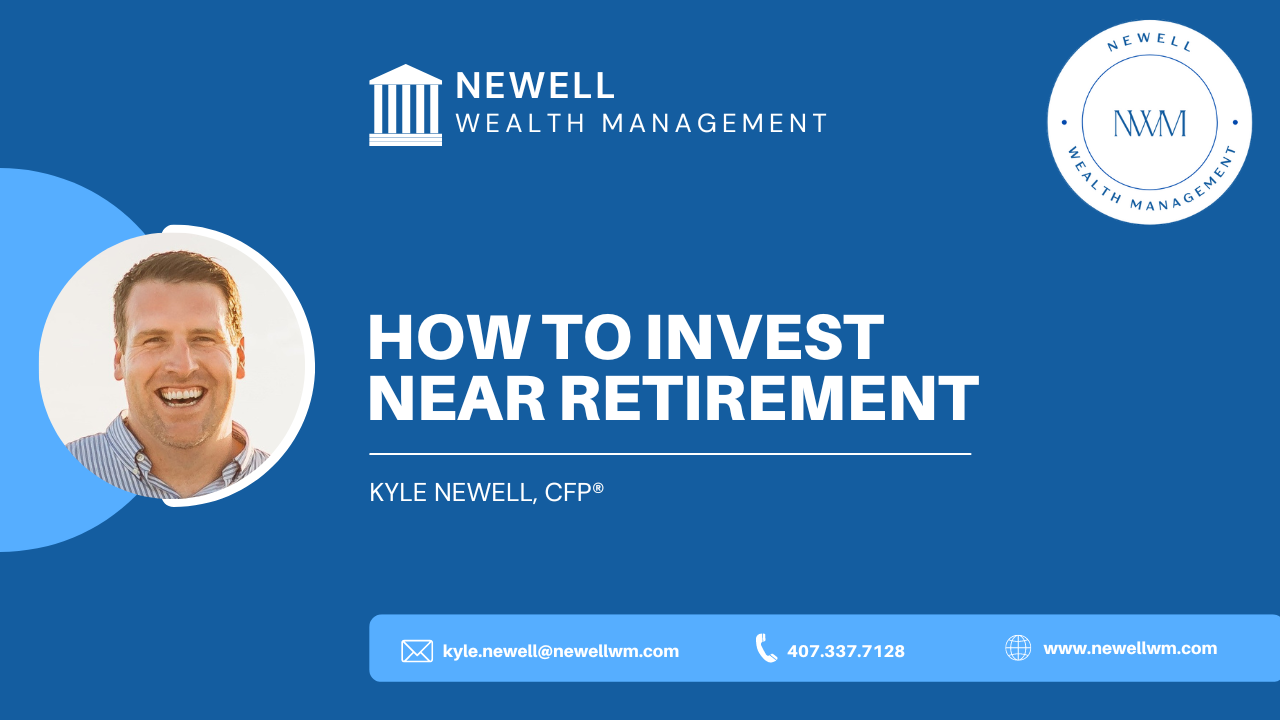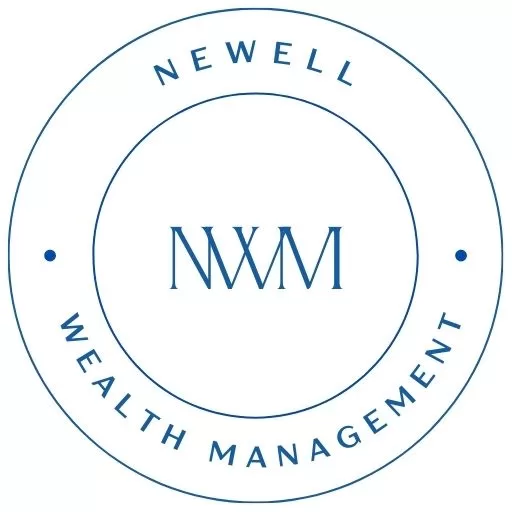How to Invest Near Retirement

You’re getting closer to retirement. You’ve worked hard, saved well, and have a good little nest egg set aside in various places. You’re starting to think about how to protect what you have, especially with volatile markets. You don’t want to give up the growth because you need the money to last as long as you do. You begin to question how to invest near retirement.
It’s a frequent question, yet not necessarily always easy to give a straightforward answer to. You need to discuss a few points to get an idea of the right investment strategy for you.

Define the Purpose of the Money
You can do this as a whole or by defining it by the type of account. You may need access to some of your money in the next couple of years. Some you may not need for five or ten years. There may be some that you don’t have a specific date for access.
Ultimately, you know you will eventually need to access it and want to be sure you can. The right strategy should first focus on the purpose of the money and when you need to tap into it.
Risk Assessment
Everyone has a different comfort level of risk tolerance. It’s essential to assess how much risk is suitable for you.
I once had a client who was in her 80s. She was fine owning very risky investments. She felt that if she didn’t use the money, her kids would likely receive the money someday. She wanted them to have suitable aggressive investments that she believed in. She took the time to understand the risks in order to take them.
Everyone will be a little different in how much risk they’re willing to take. Some are unable to handle the roller coaster ride that comes with high-risk investments and investing in general. Risk assessment ties back to defining the purpose of the money.
You may be comfortable taking on a little more risk if you know that money will not be used for 5, 10, or 20 years. You may view risk differently if it might be needed in the short term.
It’s important not to be too conservative because you may find yourself unable to live the way you would like in retirement. Consider your risk tolerance but remember inflation and expenses and ensure you earn enough with your investments to keep up.
Choosing the Components
This step is where you can get in the proverbial weeds. There is no silver bullet, as they say, for investing. Before deciding, you need to consider the pros and cons of each of the different types of investment strategies.
Some might give you more protection, but you may give up being able to access the money without penalties. You may also give up growth, yielding less return than a riskier option.
You may like to look at components that will give you some growth but may have more fluctuation that you have to bear. Some components can do a little bit of both, but you don’t get the best of both worlds.
There are 1000s upon 1000s of different strategies that you can choose to help make sure that you’re accomplishing the primary goal of protecting what you have, but without giving up the growth associated with what you need for your long-term goals. This is a key goal when asking how to invest near retirement.
Monitoring
Interestingly, this is one of the least focused on steps, yet it is one of the most important. It’s essential to monitor your component decisions. Look at things like:
- How are those decisions
- How have those decisions played out
- How has your life changed over time
- How does that impact what decisions you need to be making ongoing basis
For instance, I had a client that was getting closer to retirement. He didn’t realize how much company stock he had accumulated over the years. As he was getting ready to retire, the company stock, unfortunately, dropped pretty significantly in value, almost 30 – 40%. This happened in a relatively quick timeframe of a couple of months, which greatly hindered his retirement plans.
He had set it up and never really taken the time over all the years to monitor it. When he was ready to retire, and this happened, he came to see me. By putting all these pieces together, we devised a plan to clean things up and avoid further surprises.
The key takeaway here is to monitor and reevaluate your decisions on an ongoing basis. Is this still the right strategy for you? Do you need to make changes based on where your life is now?
Case Study
Jim and Susan are about a year away from retirement. Their retirement goals are:
- To retain their current lifestyle, including some travel
- Not be a burden to their children as they go through the aging process
- Leave a little money aside if possible
- Protect what they have but still have their money grow and work for them
First, let’s look at what income is needed right now. How do we recreate the paycheck?
Jim has a pension from his company that will cover them part of the way. Jim and Susan want to wait until full retirement age to claim Social Security. This means they have a gap between retirement at 65 and collecting Social Security.
What they need is a portfolio that will generate some short- and long-term income and continue to supplement their income above their pension and Social Security. In looking at a strategy for them, we determined a few things.
1) They need money set aside for the short term using a very conservative strategy.
This liquid asset provides access to cover any income, especially if some of the longer-term stuff starts to drop on them. To help them sleep at night, we will set aside some cash, cash equivalents, or other conservative-type investments to cover any short-term needs. This helps if the market should fluctuate and they do not need or cannot sell some different sorts of investments.
2) For the second component of their portfolio, they want some risk but not too much because they may need the money in the next four to six years.
We are setting up the ability to have a more aggressive yet relatively stable risk-wise investment, meaning it shouldn’t fluctuate a lot. They understand that it can still fluctuate a little, but they will have a little bit better earning potential vs. the conservative component.
3) A longer-term strategy that goes beyond is something they think about often.
To give them seven to eight years of income needs from the portfolio, they opted to set the rest in longer-term growth type of investments that will keep up with inflation and drive the portfolio’s value over time.
Having these different buckets in their strategy helps them feel confident in what they’re doing with investing, especially near retirement. They feel confident in their decision to invest the money. However, it’s in a riskier category because it has been defined as a target of 10+ years and gives them the best growth potential compared to some of the more conservative options based on history. History doesn’t guarantee the future but provides us with an idea of what to expect.
Jim and Susan are also considering the tax ramifications of their component decisions. Healthcare and how tax ramifications impact healthcare costs, especially with Medicare, is a top concern as they don’t want to burden their children as they age. Having the money in tax-efficient accounts as best they could is important.
It’s a bigger picture that you need to consider when investing near retirement. Break it down into smaller timeframes.
Short-Term (under two years): Cash, cash equivalents, or more conservative
Intermediate-Term (2-7 years): Less conservative but not aggressive
Long-Term (8+ years): Investments with more risk to keep up with
This is just one example of how to work with your financial planner to craft a plan that makes sure you feel confident in your investments near retirement.
Create Your Strategy
Understanding how to invest near retirement doesn’t need to feel overwhelming or stressful. If your goal is to protect what you have now while still getting some growth to keep up with inflation and your income needs for now and the future, this process will help.
Talk with your financial planner about your financial goals and positioning your portfolio in a way that makes you comfortable. If you need more guidance or need a financial planner, I am happy to help.
We can meet virtually or in person if you live in the Central Florida area. Please email me at kyle.newell@newellwm.com, call/text at 407.337.7128, or schedule a meeting at Schedule – Newell Wealth Management (newellwm.com)
Important Information
Newell Wealth Management, LLC (“NWM”) is a registered investment advisor offering advisory services in the State of FL and in other jurisdictions where exempted. Registration does not imply a certain level of skill or training. The presence of this website on the Internet shall not be directly or indirectly interpreted as a solicitation of investment advisory services to persons of another jurisdiction unless otherwise permitted by statute. Follow-up or individualized responses to consumers in a particular state by NWM in the rendering of personalized investment advice for compensation shall not be made without our first complying with jurisdiction requirements or pursuant an applicable state exemption.
All written content on this site is for information purposes only and is not intended to provide specific advice or recommendations for any individual. Opinions expressed herein are solely those of NWM, unless otherwise specifically cited. Kyle Newell and NWM are neither an attorney nor an accountant, and no portion of this website content should be interpreted as legal, accounting or tax advice. Material presented is believed to be from reliable sources and no representations are made by our firm as to other parties’ informational accuracy or completeness. There is no assurance that the views or strategies discussed are suitable for all investors or will yield positive outcomes. Investment involves risks including possible loss of principal and unless otherwise stated, are not guaranteed. Any economic forecasts set forth may not develop as predicted and are subject to change. All information or ideas provided should be discussed in detail with an advisor, accountant or legal counsel prior to implementation.
